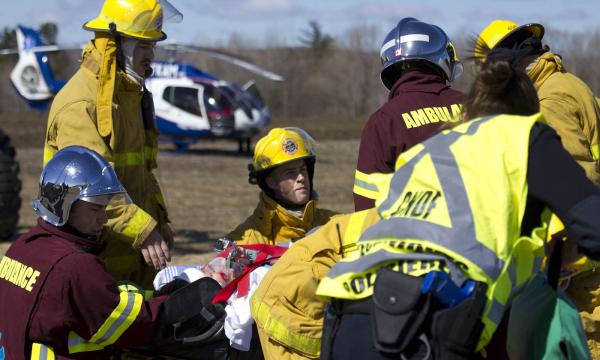The emergency management and emergency response sectors are undergoing a transformation, in part because some natural disasters are becoming more severe as the climate changes. The sector’s biggest challenge is performing realistic simulations of fires and accidents so they can better prepare for and respond to them and test new technologies.
The Campus Notre-Dame-de-Foy, a college near Québec City, is rising to the challenge and building an experimental multidisciplinary site that will be one-of-a-kind in Canada.
This massive, open-air laboratory is located on a nearly 20,000-square-metre plot of land, an area larger than three Canadian Football League fields. Disaster simulations, including wildfires, as well as road and rail accidents and toxic spills, can be created on the site. The centre will train firefighters, paramedics and police officers under conditions that replicate real-life experiences, and it will provide a controlled site for companies looking to test new technologies.

“Our goal is to establish a research program that will make it possible for the transitioning emergency response sector to benefit from innovations in the field, leading to higher performance, a better understanding of the challenges and a greater ability to help us find solutions to the problems we might face in coming years,” explains Marie-Eve Drouin, manager of the RISC Centre.
With funding from the CFI’s College Fund, the RISC Centre will acquire specialized equipment including a multi-room house where fires can be simulated in a controlled manner. The house includes a training maze and obstacle course where researchers can study the physical and mental limits of responders in emergency situations.
“This investment in prevention will have significant economic benefits for all sectors of emergency management,” says Drouin, “and it will save many lives.”








